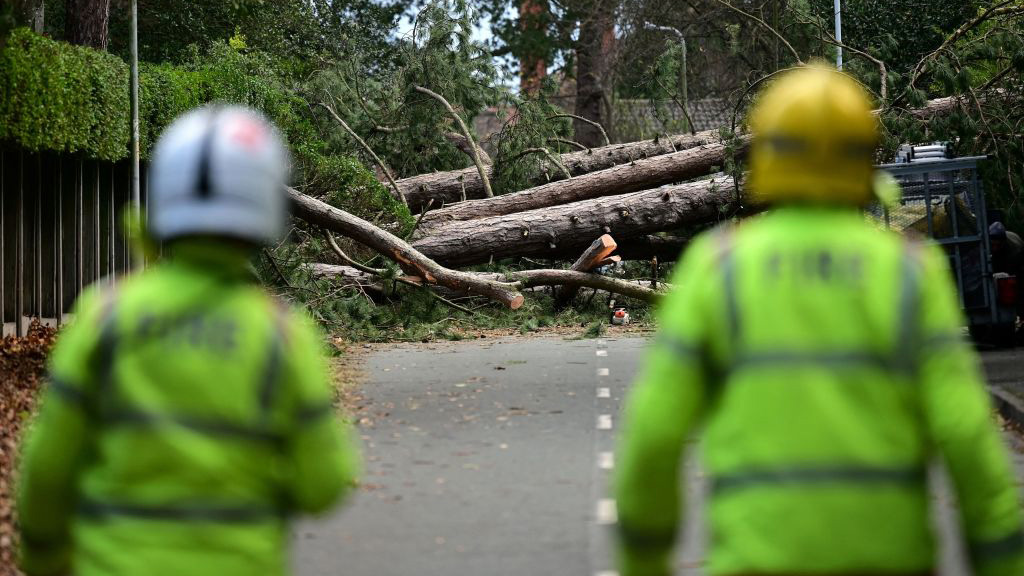Ignoring climate change could wreak havoc on the UK's IT infrastructure
No one knows how key infrastructure will fare against extreme weather due to a lack of data and government action


The UK's IT and telecommunications infrastructure is almost entirely unprepared for the extreme effects of worsening climate change, according to a new report.
The Committee on Climate Change (CCC) has stated that the UK government has “no visible plan or process” to manage climate risks to the UK’s telco and IT infrastructure, despite the extreme temperatures, increases in flooding, and intense storms that will arise as a result of climate change.
Weather events could inflict severe damage to equipment such as data centres, fibre optic cables, and mobile masts, and little has still been done to prevent this from taking place.
Concerning the entire sector, the CCC stated that it was unable to properly evaluate climate resilience due to an overwhelming lack of data.
It urged the government to create metrics by which climate impact and adaptation in the sector could be measured, including the state of network equipment, the temperature thresholds of critical components, and data on which services are at risk of floodwater damage.
"While there is a general understanding of the interactions between ICT infrastructure and weather, quantitative projections assessing how climate change will affect the frequency and magnitude of these interruptions are lacking," read the report.
"This is compounded by a lack of public information on the location or specification of assets for interests of security and commercial sensitivity. Outages can have significant effects on local infrastructure networks and businesses and more broadly via interdependent infrastructure."
Sign up today and you will receive a free copy of our Future Focus 2025 report - the leading guidance on AI, cybersecurity and other IT challenges as per 700+ senior executives
The data centre sector was singled out as one entirely maintained in the private sector, which prevents the government from assessing risk profiles and the level of mitigations already in place.
Commercial sensitivity and security were cited as factors that make operators unwilling to share data more openly, and as chief hurdles preventing necessary understanding of network resilience being established.
RELATED RESOURCE

Solve global challenges with machine learning
Tackling our world's hardest problems with ML
Existing forums such as the Data Centre Incident Reporting Network (DCIRN) do not separate weather-related outages from other incidents and as a result, there is still little understanding of the current impacts of climate events on data centres.
The committee recommended making the sharing of monitoring and resilience outcomes mandatory for operators.
The CCC also stated that as data becomes increasingly core to the economy, the impacts of the outages become more severe.
Rural communities and businesses are most likely to bear the brunt of climate change, with changes such transfer of phone services from the public switched telephone network (PSTN) to IP calling making events like power outages more severe as landline services will stop working suring a power cut.
Recommendations in the report include giving Ofcom a statutory remit for climate resilience by 2024, and for Defra to develop a set of indicators that enable monitoring of weather and climate impacts on the ICT and telecoms sector by 2025.
At present, Ofcom’s powers to ensure communications providers maintain access to emergency organisations do not explicitly pertain to climate change.
The recommendations outlined in the report would force climate resilience considerations into infrastructure planning decisions, as well as in industry standards enforced by regulators.
The extreme heat in cities is expected to worsen over the next decade and could prove especially detrimental to data centres.
Google and Oracle cloud centres struggled amid heat waves in 2022 leading to issues across cloud services, and climate projections indicate that maximum summer temperatures will continue to rise.
Many data centres are also at increased risk of flooding compared to other critical infrastructures. The 2016 National Flood Resilience Review found 304 fixed and mobile telecom sites at risk of flooding, and existing guidelines have provided design recommendations to prevent extreme weather and storms from affecting data centres considered part of critical national infrastructure (CNI).
But guidelines still fail to take into account the extent to which climate change will affect the frequency of extreme weather events.
The government’s UK Resilience Framework was established to set out clear resilience standards and contingencies for CNI as driven by climate change by 2030, but does not specifically address telecommunications or IT infrastructure.

Rory Bathgate is Features and Multimedia Editor at ITPro, overseeing all in-depth content and case studies. He can also be found co-hosting the ITPro Podcast with Jane McCallion, swapping a keyboard for a microphone to discuss the latest learnings with thought leaders from across the tech sector.
In his free time, Rory enjoys photography, video editing, and good science fiction. After graduating from the University of Kent with a BA in English and American Literature, Rory undertook an MA in Eighteenth-Century Studies at King’s College London. He joined ITPro in 2022 as a graduate, following four years in student journalism. You can contact Rory at rory.bathgate@futurenet.com or on LinkedIn.
-
 Gender diversity improvements could be the key to tackling the UK's AI skills shortage
Gender diversity improvements could be the key to tackling the UK's AI skills shortageNews Encouraging more women to pursue tech careers could plug huge gaps in the AI workforce
-
 Researchers claim Salt Typhoon masterminds learned their trade at Cisco Network Academy
Researchers claim Salt Typhoon masterminds learned their trade at Cisco Network AcademyNews The Salt Typhoon hacker group has targeted telecoms operators and US National Guard networks in recent years